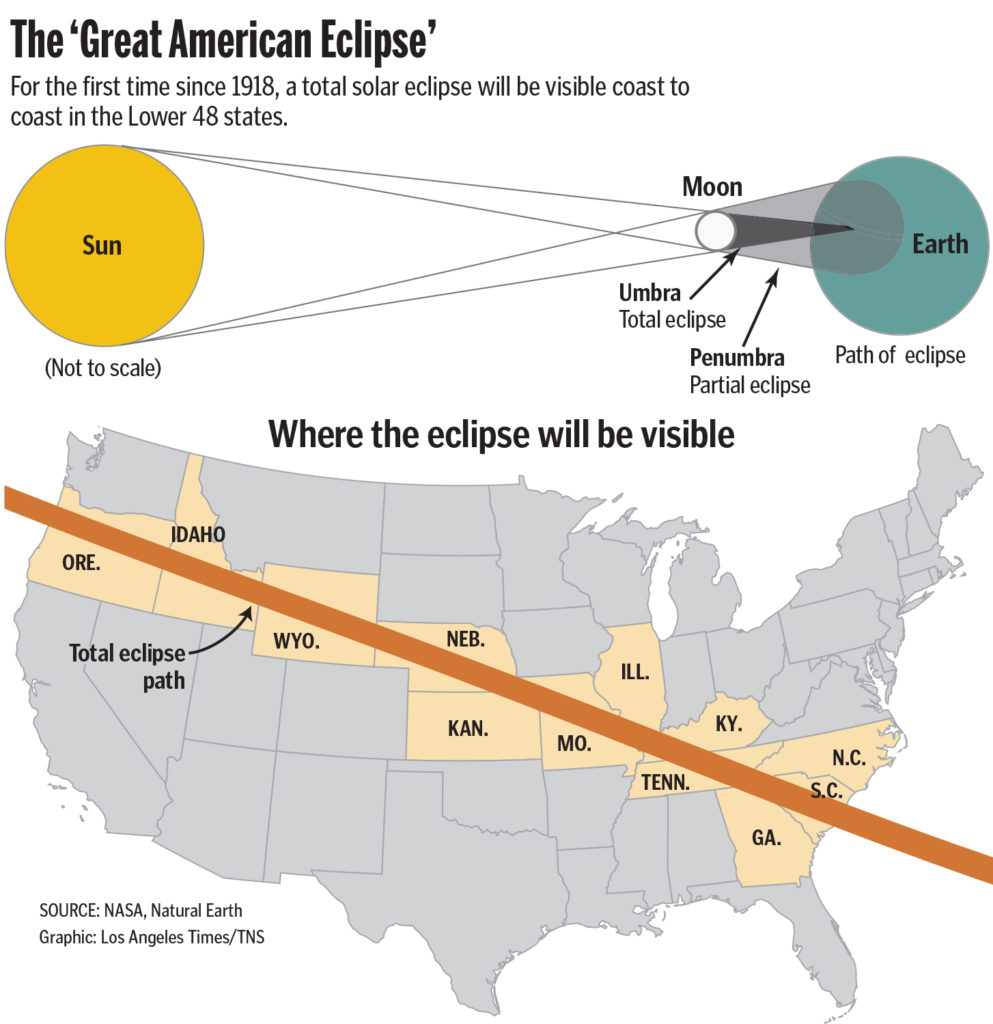How fast will the shadow move?
The umbra (shadow) will cover almost 2,500 miles, from Oregon to South Carolina, in 94 minutes. That works out to 27 miles per minute, or about 1,600 mph — about three times faster than a commercial jetliner. But it moves faster at each end and slower in the middle of the U.S. Totality will move through Oregon at more than 2,000 mph.
Why is it unsafe to look at the sun when only a small part of it is visible?
The sun’s surface is so bright that if you stare at any portion of it, no matter how small, it produces enough light to damage individual retinal cells. It takes a few seconds for this to happen, but afterwards you will see a spot as big as the solar surface you glimpsed. Depending on how long you gazed at the sun and how badly the retinal cells were damaged, this spot will either fade away or be permanent. Never assume that you can look away quickly enough to avoid eye damage.
Is bright light the only danger when viewing the sun?
While filters and glasses do safely block intense sunlight that damages retinas, the infrared “heat” from the sun can also make viewing uncomfortable as it literally warms the eye. Staring at the sun for minutes at a time even with proper filters can still over-heat the tissues and fluids in the eye, which can be dangerous. Look away frequently.



